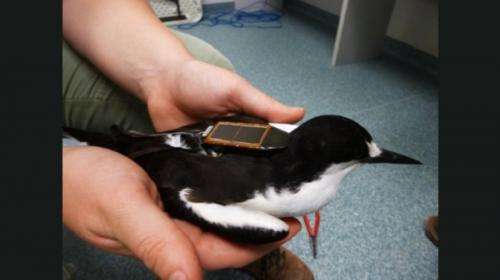Tern tracking intensifies in the Abrolhos with lightweight device

The habits of terns are being watched closely in a new study on the Abrolhos and Lancelin islands just off the West Australian coast.
A recent citizen science workshop in Geraldton detailed the tracking study being led by Dr Nic Dunlop, Citizen Science Coordinator for the Conservation Council of Western Australia.
The research team, along with scientific partner the Northern Agricultural Catchment Council (NACC) are tracking sooty terns (Onychoprion fuscatus) on Rat Island in the Abrolhos Islands and brown noddy terns (Anous stolidus) at Lancelin.
It is hoped that by studying new nesting patterns, insight can be gained into why birds are migrating away from traditional areas.
"Changes with the ocean climate are playing havoc with what we used to understand about what goes on in the ocean," Dr Dunlop says.
"Part of the reason for doing this work is to try and understand what the key features are in the ocean which might be driving those changes."
Sooty terns usually feed on small larval or post larval fish and squid and have an obligate relationship with tuna; which means they rely on tuna to ball up the prey and bring it to the surface where they can feed.
Electronic tracking devices are being placed on terns with technology that does away with battery packs that have always limited the bird's movements.
The trackers have a number of features including a very accurate GPS and an altimeter that tells not only when a bird is over the ocean but also when it's close to the water.
Using a Teflon tape harness that fits snugly around the bird's wings and chest and fitted with lightweight computer chips; these devices have been reduced to a mere 5.5gms.
"You have a base station and relay stations located near to where you are expecting the tracked birds to return," Dr Dunlop says.
"Every time a bird comes back into that field it downloads its data to the base station without carrying any transmitting apparatus or power, it's all supplied from the base station.
"Later this year more birds will be tracked by fitting and retrieving the devices during the early part of the breeding season."
NACC is providing equipment for the project including the base stations, trackers, software and assistance with travel, however all the scientists are working voluntarily.
Provided by Science Network WA



















